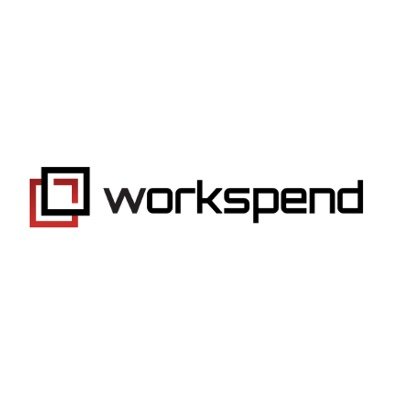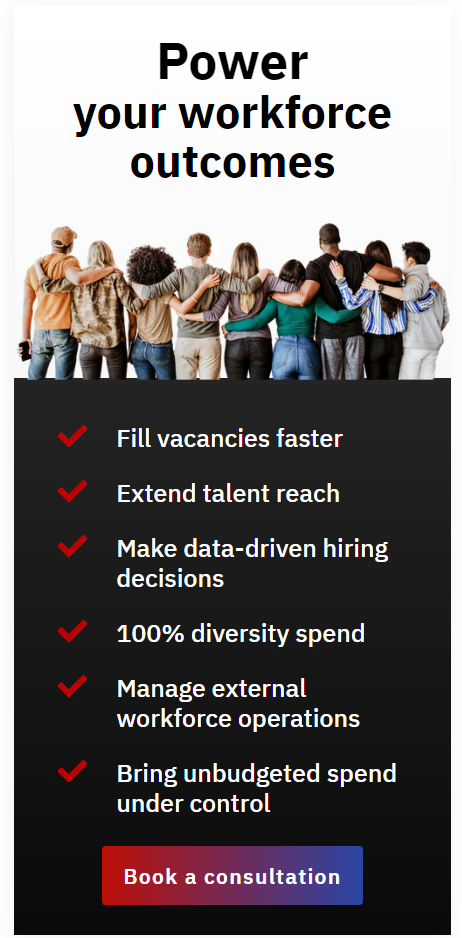
Chloe Mumford - 6 min read
Taking diversity seriously: Why should organizations prioritize D&I in their workforce strategy?
What does it take to be a progressive employer in the new era of work? Here we explore why diversity and inclusion should be a priority in mapping out your workforce strategy.
The growing importance of prioritizing D&I
The topic of diversity and inclusion has been a hot topic for many years, but now there seems to be more pressure on organizations to prioritize it. One reason for this is the changing demographic: The Millennial and Gen Z generations are the most diverse in history. Of these generations, 56% of the 87 million millennials in the country are white, compared to 72% of the 76 million members of the baby boomer generation. Put bluntly, younger generations are more diverse, giving some organizations cause to reflect on their approach to the topic.
John F. Kennedy said, “Change is the law of life, and those who look only to the past and present are certain to miss the future”. The landscape of D&I has changed, and organizations will learn little from looking at their past behaviors.
The workforce outlook is another factor: the current generation of workers has different priorities from previous generations. Their focus is more on work-life balance, mental wellbeing, and they put value on working for ethical companies. Some 76% of employees and job seekers see diversity as an important factor when deciding between job offers. It is especially important for Black, Hispanic, LGBTQ+, and other minority group job seekers and employees, to see these kinds of initiatives.
What does it all mean? Not only is an effective D&I agenda the right —and sometimes the legal thing —to do, but there are positive business outcomes too that come out of diversifying your team.
Is there a difference between diversity and inclusion?
These are two separate terms, often confused. To prevent them from being used interchangeably, some level of clarification is needed. The way I like to think about it is diversity is the ‘what’, whereas inclusion is the ‘how’.
Diversity in the workplace talks about the characteristics that make up the workforce, including gender, age, sexual orientation, race/ethnicity, disability, etc.
Inclusion, on the other hand, refers to the culture of the company and the initiatives it implements in order for the diverse employees to thrive.
The organizational benefits of implementing diversity initiatives
While it might be the right thing to do, sometimes organizations find it difficult to balance the effort made to support D&I initiatives against other pressing business outcomes. After all, this is about people, not just your business. However, there is a multitude of benefits that come from encouraging diversity and inclusion in the workplace. Here are a few:
Profitability
Monetary gain is always a big organizational motivator. A recent McKinsey study found that companies in the top quartile for gender diversity on executive teams were 25% more likely to have above-average profitability than companies in the fourth quartile. This was even higher for those in the top quartile for racial and ethnic diversity, as they were 36% more likely to have above-average profitability. Yes, every business that moves ahead with a D&I initiative will face challenges, but being 36% more likely to have above-average profitability makes it well worth it.
Performance and Innovation
One of the key constraints any business executive faces is trying NOT to hire people that think like themselves, work like themselves, or look like themselves. They say birds of a feather flock together, but employing people with similar behaviors and beliefs to our own inevitably results in tunnel vision.
A D&I agenda acts against these often unintended biases. It improves the performance of the workers. HBR’s 2018 Annual Corporate Directors Survey found that 95% of directors agree that diversity brings unique perspectives to the boardroom, and 84% believe it enhances board performance. These statistics demonstrate that unique viewpoints can create unique ideas which, in turn, can lead to positive business results.
Better Quality Decision-making
A study conducted by Cloverpop found that, while all-male teams were shown to make more successful business decisions than an individual 58% of the time, gender-diverse teams outperformed individuals by 73%. The figure increases for teams with geographically diverse members, members with different genders, and at least one age gap of more than 20 years, as they made better business decisions than an individual 87% of the time.
Evidently, improving diversity within your team leads to better decision making, efficiency and innovation.

What does a diverse and inclusive employer look like?
An organizational transformation from the top down
Cultural inclusion starts from the top-down, business leaders must lead the change. Representative balance of diversity in the boardroom is key to obtaining a range of perspectives that help drive change on a larger scale. Once all organizational levels embrace the initiative, D&I will become a key part of the company culture.
Provide the education needed to act against latent norms of understanding and behavior
A successful diverse and inclusive employer provides training to their management and employees on the importance of D&I in the workplace. It’s key to forming a welcoming workplace environment where everyone can bring their best, authentic self to work. Training courses can change minds, broaden cultures, allow teams to keep the topic at the forefront of their minds and stimulate a setting where everyone feels valued.
Implement unbiased hiring
Daniel Kahneman, a well-known psychologist, has demonstrated that the majority of decisions people make are based on biases, intuition, and beliefs instead of facts and logic. This is evidenced in his book ‘Thinking, Fast and Slow’.
Training of HR staff can prevent the biases that affect the hiring process. Organizations can also implement unbiased methods of recruiting and use technology that removes bias from the hiring process in order to further drive home these processes and attitudinal transformations.
Provide a safe space
Employers need to provide a safe space for workers and to do this they would have to find out what they can do to make it safe for EVERYONE. For example, unisex toilets will make transgender and gender non-conforming workers feel more comfortable in the workplace. It’s an easy way to be progressive, and make everyone feel more comfortable and happier at work.
Flexible working opportunities
Since the rise in working from home as a direct result of the pandemic, more and more workers are prioritizing their work-life balance and mental health. Organizations can provide flexible working opportunities and implement ‘switch off’ policies to better suit the needs of their workers. In turn, staff feels valued and this is most beneficial to those who have children, who are caregivers—or even those with disabilities—thereby broadening the potential talent pool when seeking new talent.
Final thoughts
With the rise of the Millennials and Gen-Zs, companies will only feel further pressure to prioritize their D&I initiatives. Being a progressive employer sometimes means making sacrifices, however, there are only positive outcomes in implementing inclusive business practices.
Having a diverse workforce offers businesses better performance, higher profit, and improved decision-making. However, diversity and inclusion aren’t just about financial gain; it’s about opening up opportunities for a wider talent pool and making every individual feel valued.
Moreover, 75% of senior execs say they’d leave their company for one that values diversity.
The main issues we’ve highlighted here include the importance of eradicating biased recruitment and hiring processes that continue to be prevalent, and how the company culture needs to be adapted to encourage diverse workers to stay. These issues in hiring and company culture continue to plague even some of the largest organizations, as well as the unforgiving statistics describing the lack of diversity present, demonstrate the work still left to be done.
You may also like:
Stepping up diversity
Vast amounts of research proves that prioritizing diversity and inclusion can lead to business success. Why exactly is it important?
Identifying your neurodivergent workforce quotient
Organizations are finally opening up to the idea of hiring more neurodiverse workers. But what is a good number to aim for?
How to manage a diverse workforce
Learn strategies for effectively managing a diverse workforce and foster a work environment that helps all employees be their best self.
Power your workforce outcomes with a diversity MSP






